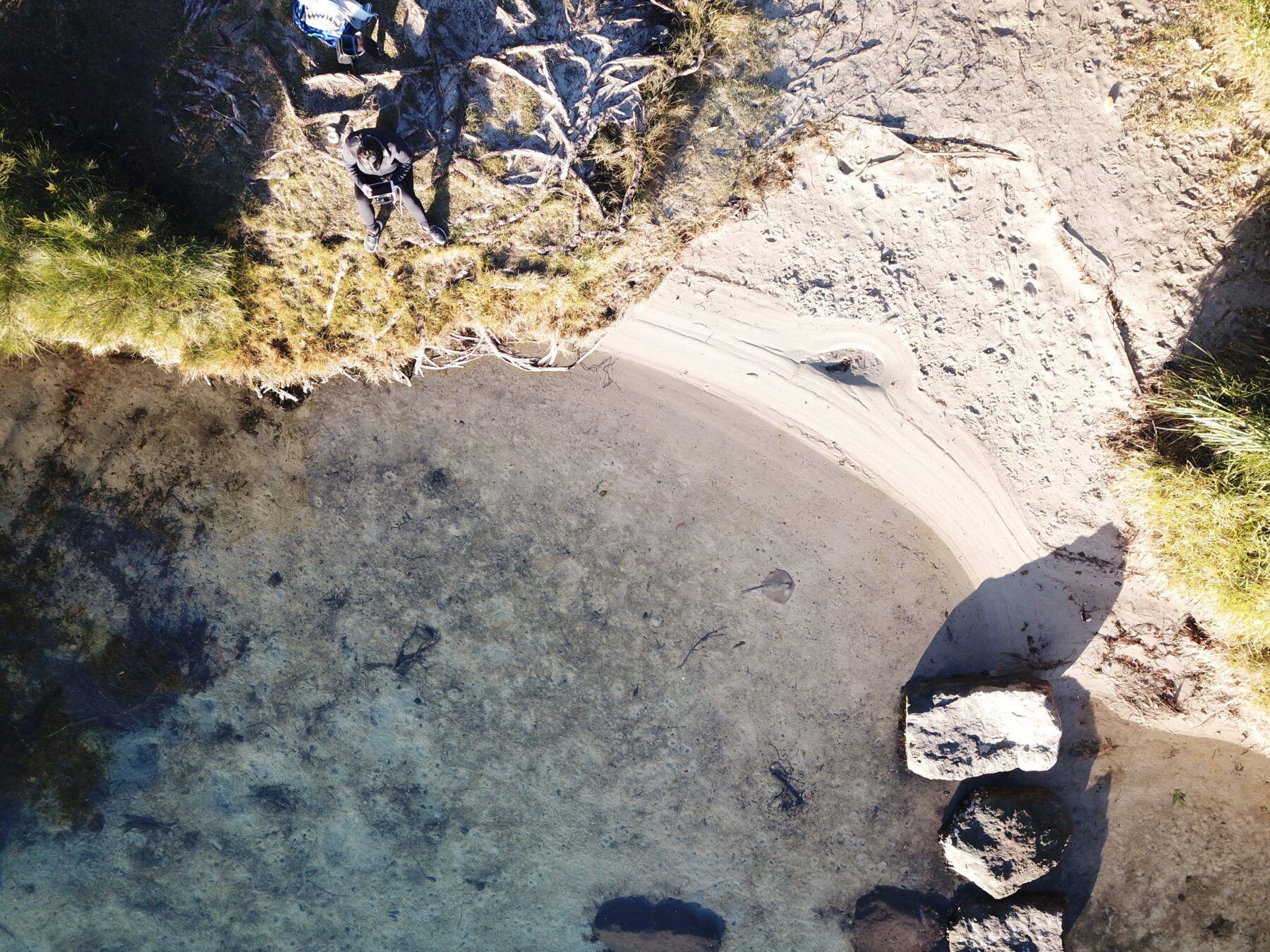Estuary stingrays shift ‘insane amount’ of sand

Australia is home to about a quarter of the world’s shark and ray species, with more than 300 varieties found in our waters. Almost half of those are found nowhere else in the world.
If just one species can shift the equivalent mass of the Great Sphinx of Giza each year – as was recently discovered by a study conducted by the University of Newcastle – then the scale of impact that these species are having collectively is nearly unfathomable.
The study focused on the estuary stingray (Hemitrygon fluviorum), which is well known as providing important ecosystem services to the estuaries it inhabits, but the study lead, PhD student Molly Grew, and her team wanted to know just how much of an effect the rays were having.

“When rays are feeding, they use their pectoral fins to push the sand in and out so they can excavate their food,” explains Molly.
“They’re also moving sand when they’re resting – they kind of shimmy down and hide themselves in the sand. We know that this turning over of the sediment helps with nutrient cycling, oxygen penetration and other ecosystem services, but we wanted to put a number on it.”
Molly’s team used drone imagery to survey a 1400sq.m area of the Brisbane Water estuary, near Gosford on the NSW coast, over the period of a week to look at the impacts of this ray behaviour.
They then extrapolated the data using high-resolution aerial imagery of the estuary to identify other ray feeding areas, which covered a 69,000sq.m area.
“We used special software to analyse the drone images, which gave us the mass of sand removed from ray feeding pits. Then, by using the aerial images, we could work out the mass of sand being moved per day, week and year in the identified ray feeding areas within the estuary,” Molly says.
What the team found was…monumental.
“Over a year, we found that they turned over more than 21,000 tonnes of sand, which is actually a greater mass than the Great Sphinx of Giza! It’s an insane amount,” says Molly.
“It’s so important that we’re managing how we interact with these species, and what we do around different estuaries and ecosystems. We need to be protecting those individuals and protecting their environment.”
Ecosystem engineers
Ecologists often refer to environment-sculpting species as ‘ecosystem engineers’. Though many species help to maintain, and ensure balance, in their ecosystem, it’s startling how much influence a single species can sometimes have on their surroundings. The rays in Brisbane Water ‘engineer’ an environment where other species can thrive, and without their machination, that delicate system could fall apart.
“When you lose ecosystem engineers, you’re also losing their ecosystem services. If the sand’s not getting turned over, the sediments become anoxic and the small animals living in the sand die out. That’s a bigger problem up the food chain because important fish species eat those little creatures,” says Molly.
Unfortunately, this loss is exactly what Molly is concerned might happen in Brisbane Water.
Estuary stingrays are often caught as bycatch in commercial fishing, but the main threat to many coastal ray species comes from coastal developments and commercial infrastructure that often destroy critical stingray habitat.

Pressed on all sides, the numbers of estuary stingrays have been steadily declining for decades, and they’re now classified as near threatened.
“When you lose important habitats like mangroves or seagrasses, you also lose the fish living in those habitats. As suitable spaces are getting smaller and smaller, there aren’t as many individuals that can live in them,” says Molly.
Threatened with extinction
As it stands, 30 per cent of all ray species are near threatened with extinction, and 19.9 per cent are listed in a threatened IUCN red-list category. Efforts are being made to help conserve stingray populations, but their numbers have continued to decline all over the world. Often, conservation endeavours are stymied by a simple lack of information.
“We hardly know anything about any estuarine elasmobranch [sharks and rays]. Unless they’re one of the big, charismatic species, very little research has been done”, says Molly.
“We need to find out so much more about them – where they hang out, what they eat, where they go. If we can provide more information to estuary managers, that would go a long way to help conserve stingray numbers.”
One species can make all the difference to the health and wellbeing of an environment, but we first need to act and ensure those ecosystems builders are still around to do so.





